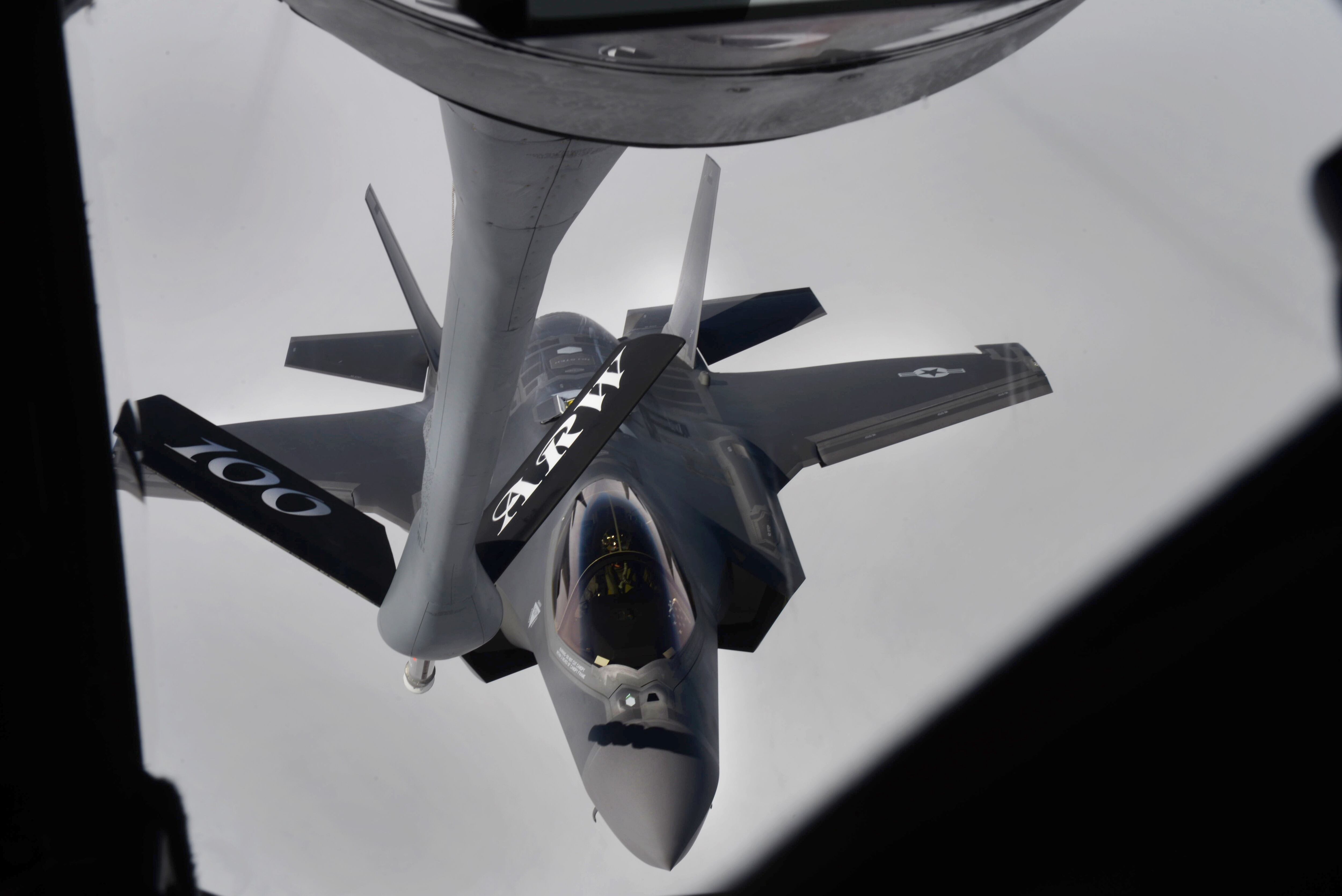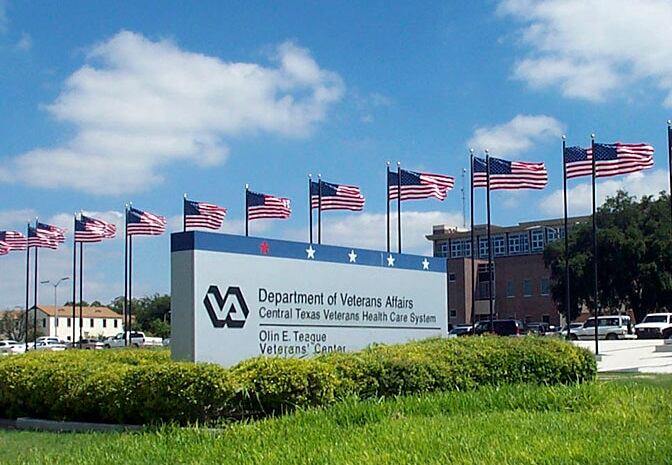WASHINGTON — Within a couple hours, eight U.S. Air Force F-35As will have arrived at RAF Lakenheath, England, for a month of practicing dogfighting and combat maneuvers with the United Kingdom and potentially other NATO allies.
Six F-35As from the active-duty 34th Fighter Squadron and reserve 466th Fighter Squadron, both located at Hill Air Force Base, Utah, landed at RAF Lakenheath on Saturday — marking the first time the Air Force version of the jet has been sent abroad for training.
Once the last two jets arrive on Wednesday, pilots will get ready to start training with U.S. F-15Cs and Es located at RAF Lakenheath, Eurofighter Typhoons owned by the U.K. Royal Air Force and perhaps Dutch F-16s, with further exercises still in the works, said Lt. Col. George Watkins, commander of the 34th Fighter Squadron. Lessons learned will help inform the bed down of U.S. Air Force F-35 squadrons that will be permanently based at Lakenheath in the early 2020s.
The deployment comes at a delicate time for the U.S.-Russian relationship, which was rocked by the U.S. military's recent Tomahawk strike on Syria that was prompted by a deadly chemical weapons attack on civilians. As a result, the Air Force has walked a thin line on messaging, with statements noting that although it was partially bankrolled by the European Reassurance Initiative funds meant to boost NATO capability against a resurgent Russia, the deployment was long-planned and should not be understood as a response to heightened tensions in the region.
Watkins characterized the deployment to Europe as a "natural progression" that started with a proof-of-concept deployment last year to Mountain Home AFB, Idaho, followed by the squadron’s recent trip to Nellis AFB, Nevada, for Red Flag.
"All that was done locally [in the United States], and then this is our first overseas deployment with the F-35, so we’re just taking it step by step," he said. "We came to a base where they are looking forward to hosting F-35s in the future as an organic squadron here, so we’re kind of taking ideas and learning from these guys, and doing some local training, and then we’ll return back to Hill."
Over the first week, F-35 pilots will start off doing air-to-air exercises with U.S. Air Force F-15Cs and F-15Es permanently located at Lakenheath, as well as engagements against other F-35As acting as adversary air, Watkins said. Pilots will practice dogfighting one-on-one and doing combat maneuvers in two-on-two formations with simulated weapons, including the laser-guided GBU-12, 2,000-pound joint direct attack munition and A-120 Advanced Medium-Range Air-to-Air Missile.
From there, activities will ramp up to small and large force exercises with U.K. Eurofighter Typhoons and potentially Dutch F-16s, he said. Other NATO aircraft could also join in for that training, but have not been confirmed yet.
"We’re not super firm if the Dutch are playing with us or not, and it’s not out of the question to have other NATO fourth-gen players participate in our exercise as well," he said.
All training exercises will take place over U.K. airspace — further minimizing the risk of miscalculation by Russia or other nations. However, F-35s will conduct "out and back" flights to other NATO countries to familiarize themselves with the region, although the locations of those sorties will not be announced will not be announced until after the planes have safely landed back at Lakenheath.

An F-35A Lightning II receives fuel from a 100th Air Refueling Wing KC-135 Stratotanker over the Atlantic Ocean on April 15, 2017.
Photo Credit: Airman 1st Class Tenley Long/U.S. Air Force
The Air Force has sent 215 pilots, maintainers, support personnel and security officers to England. That’s more manpower than what’s needed for an event of this size, but the service wanted as many airmen as possible to benefit from the deployment, Watkins explained.
For day-to-day maintenance, management and mission planning, operators will rely on the F-35’s logistics hub, the Autonomic Logistics Information System.
"We’ve had pretty good luck with ALIS so far," he said. "We sent a team to make sure that everything was set up and ALIS was running, and they got it set up in record time. It went really smooth to get everything set up, hooked up and talking across the IP addresses."
Although the deployment so far has proceeded without any major problems, Watkins acknowledged that a small snag has led to the delay of two jets arriving in England.
During the initial flight to Lakenheath, a pilot noticed he had a fuel tank float valve that didn’t seem to be reading correctly, and opted to have maintenance check it out as a "routine safety precaution," he said. That aircraft and an additional F-35 acting as its wingman stayed behind at Bangor, Maine, before flying to the United Kingdom today.
"It ended up not being an issue, but we wanted to make extra sure of that before crossing the Atlantic," Watkins said.
Valerie Insinna is Defense News' air warfare reporter. She previously worked the Navy/congressional beats for Defense Daily, which followed almost three years as a staff writer for National Defense Magazine. Prior to that, she worked as an editorial assistant for the Tokyo Shimbun’s Washington bureau.




